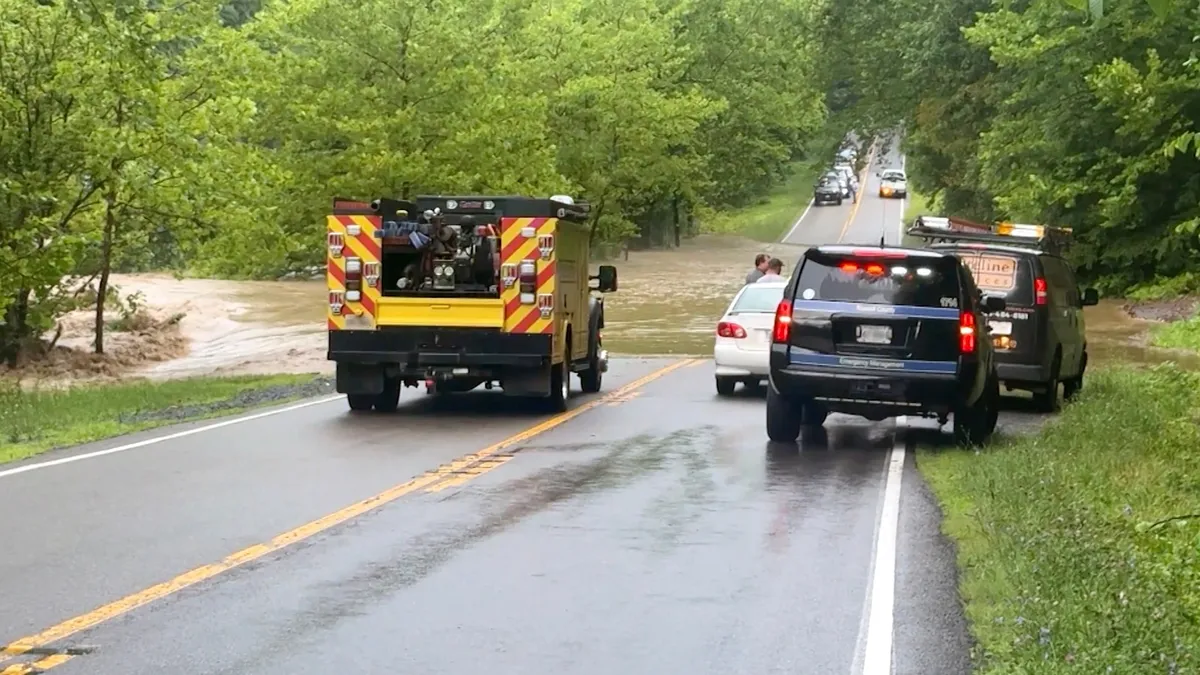
As of Saturday evening, approximately 11 million Americans are facing flood alerts due to a persistent ring of fire weather pattern impacting the eastern two-thirds of the country throughout the weekend. A flash flood emergency has been declared for areas near Washington, D.C., including suburban regions such as Chevy Chase and Silver Spring, lasting until 9 p.m. ET. The National Weather Service has characterized the situation as particularly dangerous, with flash flooding already reported in the area.
So far, between 3 to 5 inches of rain have fallen, and additional rainfall of 1 to 2 inches is expected. A flood watch has also been issued for Washington, D.C., extending until 10 p.m. ET. The combination of atmospheric moisture and saturated ground conditions raises serious concerns about ongoing and potential flash flooding.
Flood watches remain active not only for Washington, D.C., but also across portions of Iowa, western Illinois, and northeastern Missouri through Sunday. Additionally, parts of Virginia and northeastern North Carolina are under flood watches until Saturday night. Areas affected by these watches could see rainfall totals ranging from 2 to 4 inches.
Several Flash Flood Warnings are currently in effect across regions including southern Illinois, southern Indiana, and northern Kentucky, where heavy rain from thunderstorms has already occurred. Although heavy rainfall and flooding will largely be localized, the potential for severe rainfall extends across a significant portion of the eastern United States, which is under a s slight risk for excessive rainfall through tonight. Rainfall amounts of 1 to 3 inches are possible, with some areas experiencing localized higher amounts.
Portions of western and central Kentucky, southern Indiana, and southeastern Illinois have been elevated to a moderate risk — level 3 of 4 — for excessive rainfall through Saturday evening. Rainfall totals in these regions could range from 3 to 5 inches, with rainfall rates potentially reaching 2 to 3 inches per hour.
The term 'ring of fire' is not a formal meteorological term, but it describes an area of high pressure, often resembling a heat dome. Thunderstorms typically develop around the perimeter of this heat dome. Currently, high pressure centered over the Southeast is contributing to extremely hot and humid conditions in that region, while strong to severe storms remain a possibility along the high's perimeter, affecting portions of the Plains, Midwest, and East Coast.
As a result, severe thunderstorm watches are in effect for areas in southern Maryland, northeastern North Carolina, and Virginia until 10 p.m. ET Saturday. The main threats include damaging winds with gusts reaching up to 65 mph, as well as the potential for isolated large hail up to 1 inch in diameter.
To the west, regions in Nebraska are under a tornado watch until 11 p.m. CT Saturday. Additionally, a severe thunderstorm watch is in effect for parts of eastern Montana, North Dakota, South Dakota, and far northeastern Wyoming until 12 a.m. MT. Damaging winds, with gusts up to 70 mph, are anticipated alongside the risk of very large hail measuring as much as 2.5 inches in diameter.
In total, over 13 million individuals across 13 states are under a s slight risk — level 2 of 5 — for severe weather throughout the night. The threats of damaging winds and flash flooding persist across multiple areas. Powerful storms developing over parts of the Plains and Midwest could lead to large to very large hail and even a few tornadoes.
As we move into Sunday, parts of the Dakotas maintain a slight risk for severe weather, while northeastern regions, including major cities like New York City, Boston, and Albany, might also experience strong to severe storms, particularly characterized by damaging winds and the potential for hail.